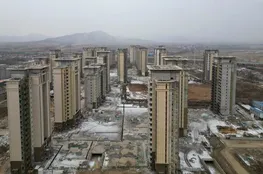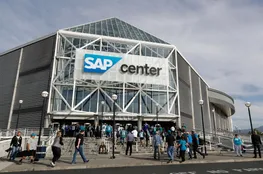As the Chicago Bears gear up for another season at Soldier Field, the conversation around their ambitious lakefront stadium proposal has increasingly focused on financing. The team appears determined to place the burden of public financing on the Illinois General Assembly’s November agenda, despite resistance from the governor. Moreover, the NFL’s nod to private equity cash infusion may significantly boost the Bears’ financial resources. However, these financial dynamics have overshadowed the more controversial aspects of the Bears’ plans—a substantial takeover of lakefront land.
Dubbed the 'Stadium for Chicago' by the Bears, a more fitting title might be 'Lakefront for the Bears.' The team is proposing a $4.7 billion development project on the Near South Side lakefront, with a new state-of-the-art stadium as its centerpiece. Among the most intriguing proposals is the renovation of Soldier Field into a multi-use structure, envisioned to include public playing fields between the historic colonnades. This new green space would add a unique character to the area. However, significant alterations, such as large glass openings on the lake-facing side and a new skating rink, could compromise the historic base of the structure.
The proposal also includes a broad stairway connecting the new stadium to a multistory building at the northeast corner of Soldier Field and a pair of multistory buildings at the north end of the field, which would bookend a proposed bridge to the Field Museum. Despite the green space, most of these uses are commercial in nature. Chicago’s long-standing tradition of keeping private development off the lakefront would oppose such renovations and new structures.
Revisiting history, Burnham Park and Northerly Island once hosted the Century of Progress exposition in 1933-34, a temporary world’s fair aimed at celebrating Chicago’s centenary. After its closure, it reinforced Burnham Park’s intended use as a public park, as per the 1909 Plan of Chicago. Flash forward nearly a century, the Bears' ambitions now threaten to convert this lakefront park into an entertainment complex, serving their interests and yielding new revenue throughout the year. Renderings might showcase greenery, but don’t be misled—the new complex would cover much of this invaluable lakefront land from the Field Museum to McCormick Place.
The Bears’ argument often cites the long-standing parking lot between Soldier Field and McCormick Place as a justification for their plans. The predecessor to this idea, the Lucas Museum proposal, revolved around converting the parking lot into a museum. But what if this parking lot were transformed into parkland, as Daniel Burnham envisioned? It would be a public-minded project in the spirit of keeping the lakefront 'forever open, clear, and free.'
The project’s scale is immense. The stadium would occupy the entire space between Burnham Harbor and DuSable Lake Shore Drive, dwarfing the historic colonnades of Soldier Field and making it an unfit neighbor for the Museum Campus. The design, created by Manica—a Kansas City-based firm known for designing large-scale stadiums—features a structure capable of hosting 60,000 to 70,000 football fans but offers little architectural acknowledgment of its prime lakefront location. Its only homage to Chicago is a gigantic window framing the downtown skyline.
The Chicago Bears are thinking big, using public land meant for communal use for private gain. Historically, Chicago has prevented private enterprises from developing on the lakefront, and Soldier Field was always the exception, not the rule. Developing such land to cater to events for fewer than a dozen days a year undermines its designated public use. Comparisons to Navy Pier's commercial zone highlight the type of development the Bears envision. These plans go against the principles upheld by Chicago’s civic visionaries like Montgomery Ward and Daniel Burnham.
This new stadium should not claim a spot on Chicago’s cherished lakefront. There are numerous other locations within the city—like The 78, Lincoln Yards, Bronzeville Lakefront, or the McCormick Place truck marshalling site—that could accommodate such a large-scale development. It’s high time to halt the Bears’ misguided plans and send them back to the drawing board.
Edward Keegan is an architect who practices, writes, broadcasts, and teaches on architectural topics. Keegan’s biweekly architecture column is supported by a grant from former Tribune critic Blair Kamin, as administered by the not-for-profit Journalism Funding Partners. The Tribune maintains editorial control over assignments and content. Submit a letter, up to 400 words, to the editor at [email protected].
























